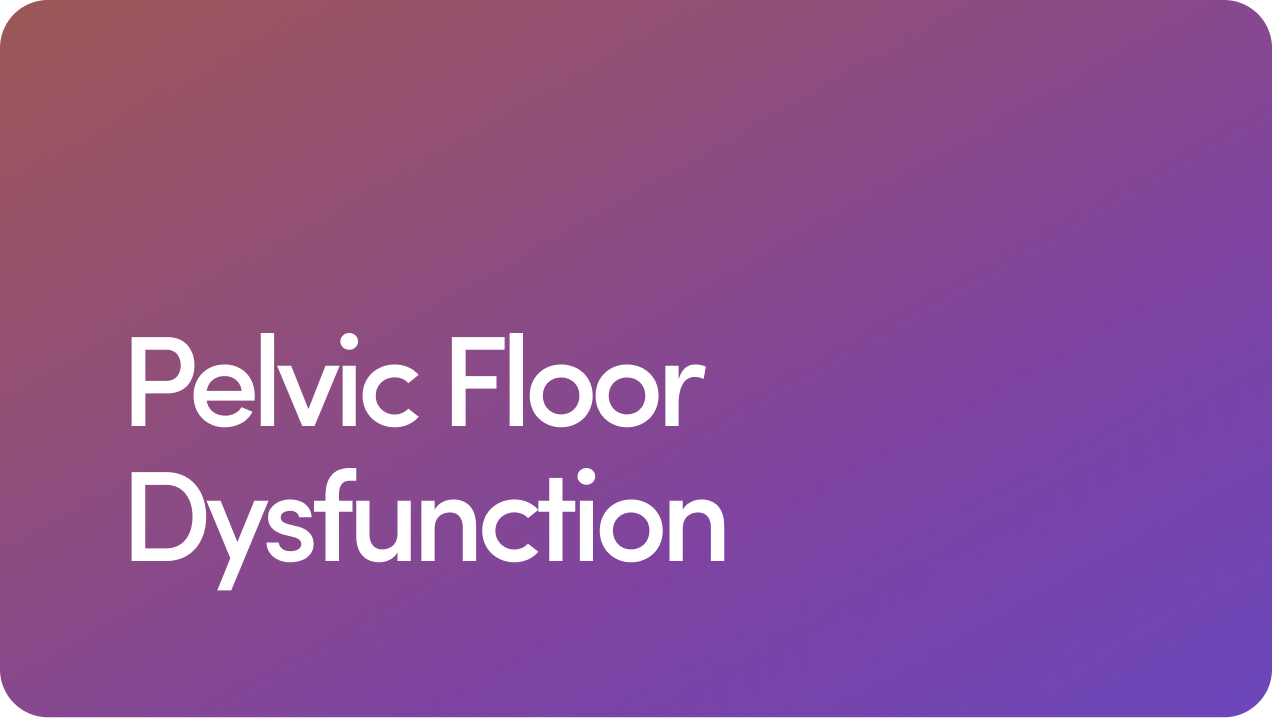Secondary Hypogonadism in Men: What You Need to Know
Secondary hypogonadism, also called hypogonadotropic hypogonadism, is a medical condition that can affect men or women. When it occurs in men, it’s characterized by low testosterone levels, and in women, low estrogen and progesterone.
Overview
Secondary hypogonadism, also called hypogonadotropic hypogonadism, is a medical condition that can affect men or women. When it occurs in men, it’s characterized by low testosterone levels, and in women, low estrogen and progesterone.
Most of the testosterone in the male body is produced in the testes. However, the testes only produce testosterone when they receive the go-ahead from other glands in and around your brain called your hypothalamus and pituitary gland.
Secondary hypogonadism develops when low testosterone levels occur due to problems with the pea-sized pituitary gland or, less commonly, in the hypothalamus, two brain regions that regulate hormone signaling to the testes. This is in contrast to primary hypogonadism, which occurs when low testosterone is caused by problems with your testes.
Symptoms of Secondary Hypogonadism
Testosterone is the main sex hormone, or androgen hormone, in males. Your body has receptors for testosterone throughout your body, and low testosterone concentrations in your blood can lead to many symptoms or health problems.
Signs that are highly suggestive of testosterone deficiency in adult men include:
Fewer spontaneous erections
Fewer erections in your sleep or when you wake up (aka “morning wood”)
Reduced testicular volume/size
Other symptoms of hypogonadism may include:
Decreased muscle mass or strength
Gynecomastia, the development of breast tissue
Increased body fat (especially abdominal)
Reduced bone density (and increased risk of osteoporosis)
Decreased physical performance or stamina
Hot flashes or night sweats
Depression
Difficulty concentrating
Irritability or mood swings
Fatigue
Loss of body hair
Anemia, or low red blood cell count
Erectile dysfunction (difficulty achieving/maintaining erections)
Symptoms are generally more pronounced the lower your testosterone levels are.
One of the more common causes of secondary hypogonadism is a pituitary tumor (usually a benign adenoma) that compresses or impairs hormone-secreting cells. Some men may have low levels of other pituitary hormones as well, which may cause additional symptoms, including the following:
Growth Hormone (GH) deficiency
Symptoms of low growth hormone in adults can include:
Decreased muscle mass
Increased body fat
Low energy or fatigue
Decreased strength
Poor concentration or memory
Depression or mood changes
Reduced bone density
Low Thyroid-Stimulating Hormone (TSH)
Thyroid-stimulating hormone tells your thyroid gland to produce thyroid hormone. Low TSH from pituitary dysfunction causes low thyroid hormone levels (secondary hypothyroidism), which can lead to symptoms like the following:
Fatigue
Weight gain
Cold intolerance
Dry skin
Constipation
Depression
Slowed heart rate
Puffy face
Hoarseness
Low Adrenocorticotropic Hormone (ACTH)
ACTH tells your adrenal glands to produce cortisol. Low cortisol produced by your adrenal glands is called Addison’s disease. It can cause:
Chronic, or long-lasting, fatigue
Muscle weakness
Loss of appetite
Weight loss
Abdominal pain
Low Follicle-Stimulating Hormone (FSH)
Follicle-stimulating hormone (FSH) tells your body to produce sperm, a process called spermatogenesis. Low levels of FSH may cause a low sperm count or problems with sperm development.
Causes of Secondary Hypogonadism | Causes of Hypogonadism
The release of testosterone from your testes requires the proper function of a variety of glands in your body that work in a chain to keep your hormones in balance. Collectively, this chain of hormones is called the HPG axis.
It works like this:
Your hypothalamus releases gonadotropin-releasing hormone (GnRH).
GnRH stimulates your pituitary gland to secrete serum luteinizing hormone (LH) and FSH.
Serum LH travels through the bloodstream to the Leydig cells in your testes, which respond by producing and releasing testosterone. FSH targets cells that produce sperm.
The presence of testosterone in your blood provides feedback to the hypothalamus and tells it to produce less GnRH. Low levels of testosterone tell it to produce more.
Hypogonadism is classified depending on where in this chain the problem causing low testosterone is found.
Male hypogonadism is classified as:
Primary (testicular failure). The testes fail to produce adequate testosterone despite high LH and FSH. This is caused by things like Klinefelter syndrome or mumps.
Secondary. Low LH and FSH due to pituitary gland dysfunction.
Tertiary. Low GnRH from hypothalamic dysfunction.
A variety of conditions can lead to secondary hypogonadism, including the following.
Pituitary tumors. Both benign (non-cancerous) and malignant (cancerous) tumors of or around the pituitary gland can compress or damage the cells that produce LH and lead to hypogonadism. Most pituitary tumors are adenomas, slow-growing and benign tumors.
Head trauma. Head trauma can cause damage to your pituitary gland that can lead to compromised function.
Pituitary surgery or radiation. The prevalence of temporary or permanent changes to LH levels is high in people undergoing surgery or radiation for their pituitary gland.
Pituitary infarction. Though more common in women after childbirth (called postpartum Sheehan’s syndrome), this condition involves damage to the pituitary gland due to a lack of blood supply. It’s relatively rare in men but can occur as a complication of tumors around your pituitary gland.
Other medical conditions. Conditions such as sarcoidosis, hemochromatosis (iron overload), or histiocytosis (rare blood disorders) may lead to damage to your pituitary tissue and disrupt its function.
Genetic conditions. Some genetic conditions, such as Kallmann syndrome, can predispose you to secondary hypogonadism.
Obesity. Obesity is associated with hormonal problems, including male obesity-related secondary hypogonadism.
Medications. Some medications, such as long-term use of opioids or glucocorticoids, may contribute to secondary hypogonadism. Anabolic-androgenic steroids can also cause secondary hypogonadism after you stop using them.
Risk Factors
Risk Factors for Secondary Hypogonadism
Potential risk factors for secondary hypogonadism in males include:
A family history of pituitary tumors, although most occur with no known cause
Having a genetic condition linked to pituitary tumors, such as multiple endocrine neoplasia type 1 (MEN1)
Having other genetic conditions, such as Kallmann syndrome
Having a recent history of head trauma or pituitary gland surgery
Obesity or being underweight
Chronic kidney or liver disease
Long-term use of opioids or corticosteroids
Taking anabolic steroids and then stopping
Excessive alcohol consumption
Chronic stress
Increased age, which increases the risk of some linked medical conditions
Sleep disorders such as obstructive sleep apnea
Having an inflammatory or infiltrative disease, such as sarcoidosis or hemochromatosis
Diagnosis
Diagnosing Secondary Hypogonadism
You may need to undergo several rounds of hormone testing to receive a diagnosis of secondary hypogonadism or other hormonal abnormalities. These tests help differentiate secondary hypogonadism from other causes, such as primary hypogonadism or other conditions that can cause similar symptoms.
Testing may involve seeing a specialist in several fields such as endocrinology, urology, and andrology (a men’s health specialty).
During the diagnostic process, your healthcare provider will likely start by:
Reviewing your personal and family medical history
Reviewing your symptoms
Performing a physical exam to assess testicular size, secondary sexual traits, and signs of pituitary tumors
If they suspect a hormone problem, they’ll likely order blood tests such as:
Early morning total testosterone, to measure testosterone on two occasions
LH, follicle-stimulating hormone(FSH), and prolactin tests
When the tests find both low testosterone and low LH (and often low FSH) after excluding other causes such as acute illness or elevated prolactin, you’re thought to have secondary hypogonadism.
Some people may need further tests, such as:
Brain MRI (if your doctor suspects you could have a pituitary disease)
DEXA scan to measure bone health
Treatment
Treatment Approaches for Secondary Hypogonadism | Secondary Hypogonadism Treatment
Treatment for secondary hypogonadism depends on the underlying cause. It generally aims to treat the condition causing hormone problems and help manage your symptoms.
Treatment for Pituitary Tumors
Small pituitary tumors that aren’t causing problems often don’t need to be removed. For tumors that are causing problems, your doctor may recommend treatments such as:
Medications. Dopamine agonists for prolactinomas can shrink the tumor.
Surgery. Transsphenoidal surgery, a minimally invasive procedure through your nose, may be necessary to remove larger or non-responsive tumors.
Radiation therapy. This is used in some cases if surgery is not feasible or if the tumor comes back.
Medication Adjustment
If a medication is causing your hormonal imbalance, such as in the case of opioids or corticosteroids, your healthcare provider may adjust your dosage. This should only be done under the supervision of a medical professional.
Lifestyle Modifications
Certain lifestyle tweaks may help improve hormone levels if your habits and behaviors are contributing to your symptoms. Some examples include:
Weight management. Losing excess weight, especially abdominal fat, can improve hormonal balance and help treat obesity-related secondary hypogonadism.
Regular exercise. Strength training and aerobic exercise can improve body composition, energy levels, and overall well-being.
Balanced nutrition. A nutrient-dense diet supports metabolic function and overall endocrine health. It can also help treat malnutrition, which is linked to secondary hypogonadism.
Adequate sleep. Getting enough quality sleep is vital for hormone regulation.
Stress management. Techniques like mindfulness, meditation, or counseling may help you manage the negative effects of chronic stress on your body.
Testosterone Replacement Therapy (TRT)
Testosterone replacement therapy (TRT) is a common and potentially effective treatment for confirmed low testosterone when the underlying cause cannot be fully reversed or when symptoms persist, such as in the case of some genetic conditions.
TRT aims to restore serum testosterone levels to the normal range. It’s important to note that TRT replaces testosterone but does not stimulate testosterone production from your testes.
TRT is available in several forms, such as:
Intramuscular infections
Gels
Patches
Subcutaneous pellets
Before starting TRT, it’s important to undergo a thorough evaluation from your healthcare provider.
You can talk to a licensed healthcare professional through our telehealth service from the comfort of your own home. We also offer at-home testing kits that allow you to measure your testosterone levels at home and have your results interpreted by a licensed professional without needing to go to an in-person clinic. TRT should be prescribed and monitored by a qualified healthcare professional, with follow-up testing to ensure safety and efficacy.
Potential risks and side effects of TRT include:
Increased red blood cell count (polycythemia)
Sleep apnea exacerbation
Skin reactions
Suppression of sperm production
Increased blood pressure (although newer evidence doesn’t show an increased risk of major cardiac events)
More research is needed to fully understand what role, if any, TRT may play in prostate cancer and heart health risks. The decision to start TRT requires careful consideration and discussion with your healthcare provider.
Enclomiphene Citrate
Enclomiphene citrate (usually just called enclomiphene) is an oral medication that can stimulate your natural production of testosterone. As a selective estrogen receptor modulator (SERM), it increases pituitary release of LH and FSH. This, in turn, boosts testosterone production in the testes while generally preserving sperm production.
The main difference between enclomiphene and TRT is that enclomiphene stimulates your body to produce more testosterone, whereas TRT involves taking a synthetic form of testosterone.
In a 2024 review of studies, researchers found that enclomiphene improved testosterone levels and symptoms in men with low T.
In an older study, researchers found that enclomiphene improved testosterone levels specifically in men with secondary hypogonadism without having a negative effect on semen quality. Although research has shown that enclomiphene can raise testosterone levels in men with secondary hypogonadism and improve some symptoms, the medication is not currently FDA-approved.
Prevention
Preventing Secondary Hypogonadism
Preventing secondary hypogonadism isn’t always possible, such as in the case of certain genetic conditions. However, you can take steps to prevent some of the underlying causes to reduce your chances of developing it, including:
Maintaining a healthy weight through a balanced diet and regular exercise
Managing chronic illnesses such as diabetes and kidney disease effectively
Talking to your doctor about the risks of taking opioids, anabolic steroids, and excessive corticosteroids
Reducing alcohol consumption and avoiding illicit drug use
Wearing proper sports equipment and a seat belt in motor vehicles to lower your risk of head injury and testicular trauma
Managing stress through relaxation techniques and mental health support
Ensuring adequate sleep and addressing sleep disorders like sleep apnea
Getting regular check-ups to monitor your hormone levels and overall health
Getting treatment for underlying pituitary or hypothalamic disorders early when diagnosed
Seeking prompt treatment if you suspect you may have a hormone deficiency
13 Sources
- Allen MJ, et al. (2023). Physiology, adrenocorticotropic hormone (ACTH). https://www.ncbi.nlm.nih.gov/books/NBK500031/
- Almarouei R, et al. (2018). Sheehan’s syndrome in a man. https://www.endocrine-abstracts.org/ea/0059/ea0059ep86
- Gurayah AA, et al. (2023). U-shaped association between prevalence of secondary hypogonadism and body mass index: A retrospective analysis of men with testosterone deficiency. https://pmc.ncbi.nlm.nih.gov/articles/PMC9346090/
- Huijben M, et al. (2021). Clomiphene citrate for men with hypogonadism: A systematic review and meta-analysis. https://onlinelibrary.wiley.com/doi/full/10.1111/andr.13146
- Martins JM, et al. (2021). Primary and secondary hypogonadism in male persons with diabetes mellitus. https://pmc.ncbi.nlm.nih.gov/articles/PMC8197670/
- National Institute of Diabetes and Digestive and Kidney Diseases. (2018). Symptoms & causes of adrenal insufficiency & Addison's disease. https://www.niddk.nih.gov/health-information/endocrine-diseases/adrenal-insufficiency-addisons-disease/symptoms-causes
- Patil N, et al. (2024). Hypothyroidism. https://www.ncbi.nlm.nih.gov/books/NBK519536/
- Rodriguez KM, et al. (2016). Enclomiphene citrate for the treatment of secondary male hypogonadism. https://pmc.ncbi.nlm.nih.gov/articles/PMC5009465/
- Russ S, et al. (2023). Pituitary adenoma. https://www.ncbi.nlm.nih.gov/books/NBK554451/
- Shenoy MT, et al. (2024). Management of male obesity-related secondary hypogonadism: A clinical update. https://pmc.ncbi.nlm.nih.gov/articles/PMC11212738/
- Sizar O, et al. (2024). Male hypogonadism. https://www.ncbi.nlm.nih.gov/books/NBK532933/
- U.S. Food & Drug Administration. (2025). FDA issues class-wide labeling changes for testosterone products. https://www.fda.gov/drugs/drug-safety-and-availability/fda-issues-class-wide-labeling-changes-testosterone-products
- Yan Z, et al. (2022). Hypogonadism in male patients with pituitary adenoma and its related mechanism: A review of literature. https://pmc.ncbi.nlm.nih.gov/articles/PMC9221259/
Editorial Standards
Hims & Hers has strict sourcing guidelines to ensure our content is accurate and current. We rely on peer-reviewed studies, academic research institutions, and medical associations. We strive to use primary sources and refrain from using tertiary references. See a mistake? Let us know at [email protected]!
Related Conditions
 Erectile Dysfunction
Erectile Dysfunction
 Premature Ejaculation
Premature Ejaculation
 Low Testosterone
Low Testosterone
 Retrograde Ejaculation
Retrograde Ejaculation
 Pelvic Floor Dysfunction
Pelvic Floor Dysfunction
 Anorgasmia
Anorgasmia
*All images feature a model portrayal
(unless otherwise noted).